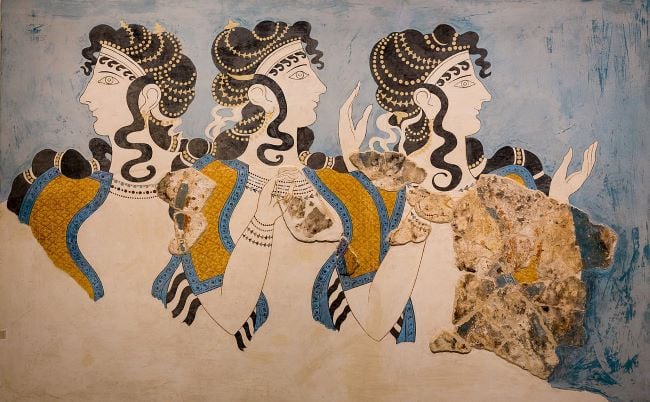
Over a hundred Minoan artifacts that have never left Crete and Greece before -including some which have never been displayed anywhere- launched on February 10 at Oxford’s Ashmolean Museum.
Labyrinth – Knossos, Myth and Reality is the first UK exhibition focusing on Knossos, the center of the Minoan civilization, which had been excavated by British archaeologist Sir Arthur Evans in the early 20th century.
The selection of Minoan artifacts, many of which were discovered after World War II, has been lent by the Archaeological Museum and the Ephorate of Antiquities of Heraklion, Crete, and will be exhibited until July 30, 2023, alongside discoveries from the Ashmolean’s Sir Arthur Evans Archive.
Visitors will also have the opportunity to enjoy an exclusive experience of Knossos Palace from the acclaimed video game Assassin’s Creed Odyssey, as the exhibition traces the story of the excavation of Knossos at Crete.
“What we are trying to do is look at the myths of Crete but also at the archaeological reality which might lie behind them. How the traditions developed in Crete which led to these myths being created,” Dr Andrew Shapland, curator of the exhibition, tells an exclusive interview with the Greek Reporter.
While praising his colleagues in Crete and the Greek Ministry of Culture for the “great support” they provided, Dr Shapland commented on this exhibition as “the start of a long-term partnership with the Archaeological Museum and the Ephorate of Antiquities of Heraklion.”
Modern-day excavators and the legacy of Sir Arthur Evans
Dr Shapland has been working on Labyrinth – Knossos, Myth and Reality since early 2019. He first pitched it as an idea for an original exhibition at his job interview with the Ashmolean Museum while applying for the newly created position of Sir Arthur Evans Curator of Bronze Age and Classical Greece.
“I said, well, since we have this fantastic collection from Knossos, we should do an exhibition about that and work with the institutions in Greece, including the Ephorate [of Antiquities] and [Archaeological] Museum in Heraklion, and we can build a partnership,” he recalls.
Indeed, as soon as he landed the job, Dr Shapland was encouraged to initiate contact with his colleagues in Crete.
“I went to Crete to see the director of Heraklion Museum, Dr Stella Mandralaki, and the Head of the Ephorate of Antiquities of Heraklion, Dr Vassiliki Sythiakakis, and they were very happy to help as well, and so we started planning it.”
During the pandemic, the three institutions carried on working online on the development of the exhibition so that Labyrinth – Knossos, Myth and Reality could launch as early as the health crisis would allow.
Half of the loans from Crete are on permanent display at the Archaeological Museum of Heraklion. Many of them were excavated by Sir Arthur Evans between 1900-1910.
“But also in our exhibition we are including some finds made by Greek excavators since World War II – since Sir Arthur Evans died. Some of those are displayed at Heraklion Museum, some other are still under the protection of the Ephorate [never-before-seen by the public]. These other 50 objects, have been excavated within the last fifty years.” Dr Shapland discloses.
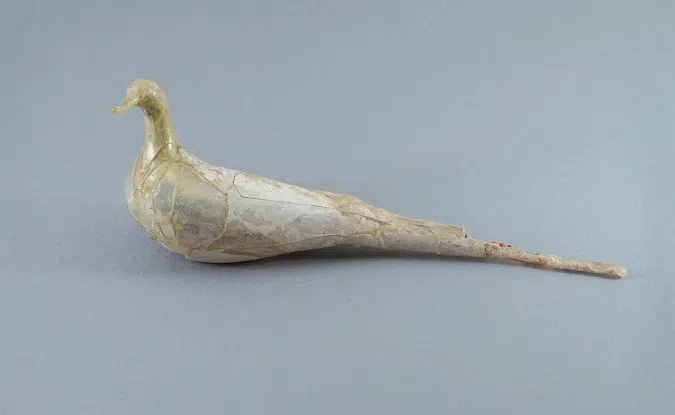
The reason why the Ashmolean wanted to borrow a lot of objects from Crete, was to show that archaeology in Knossos didn’t just stop with Sir Arthur Evans.
“There have been a lot of archaeologists who have come after him, some British, but a lot of them are Greek archaeologists working for the Ephorate. They have made some amazing discoveries. Some of them helped to fill out the picture that Sir Arthur Evans left for us, some of them maybe challenge it, and so that is what we want to do, to really bring the story up to date,” he adds.
Unique Minoan finds and the evolution of Cretan myths
One of the most famous objects that the exhibition is getting on loan from the Heraklion Museum is the Poros jug. It was excavated by Nota Dimopoulou in 1986 and is regarded as the finest marine-style jug ever found.
“Marine style is a very famous pottery style from [ancient] Crete. This [jug] is a masterpiece, we are very excited to be having this in the exhibition,” Dr Shapland explains.
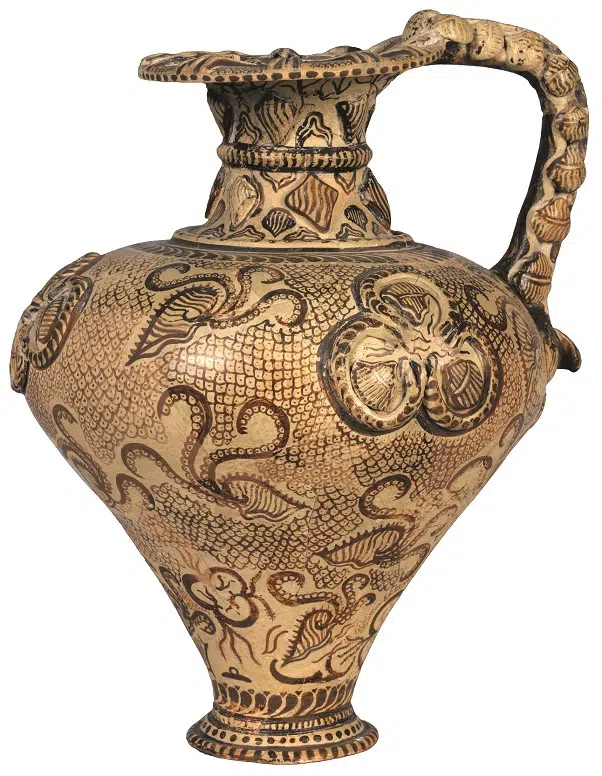
Five golden Minoan rings will also be on display.
Perhaps even more exciting, are the several never-before-seen objects included in the exhibition.
“One of the sites that we are the most excited about getting objects from, is a site called the Frangiadakis plot, which is in Knossos village, and that has been excavated in the last ten years. So, these finds are still being studied, they are still in conservation,” says Dr Shapland.
“The Greek archaeologist who excavated this plot, Dr Athanasia Kanta, has been very kind and agreed with the Ephorate for the objects to be lent to the Ashmolean before they go on permanent display anywhere else”, he notes.
“One of the finds that we are getting from there is this bronze dagger with a griffin inlay on silver, and it’s the first object of that kind to have ever been found on Crete. The other object is this bronze, silver and gold double axe, with a little bit of an iron double axe attached”, Dr Shapland reveals.
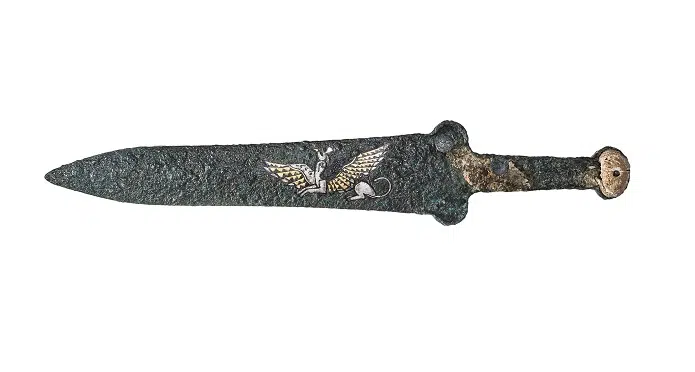
He observes that this particular site was a Minoan sanctuary which became a Roman temple afterwards, and that really helps with the exhibition narrative: “It shows that, if you want to see how the myths of Crete are transmitted, then [you need to look at] sites like this, which wasn’t thought as a Minoan site, which carries on being used until the Roman period, when some of these myths were created and written down.”
Sir Arthur Evans’s exports and excavation archives
Archaeologist Sir Arthur Evans led excavations at Knossos in the early 20th century and would later re-imagine and partially restore the famed palace of Knossos.
He first arrived in Crete in 1894, when the island was still part of the Ottoman Empire and bought part of the lands of Knossos. This included the site of the Minoan palace, which had been discovered by Greek amateur archaeologist Minos Kalokairinos a few years earlier.
As Dr Shapland recounts, when Crete became independent by the Ottoman Empire, in 1898, Sir Arthur Evans, who had already owned parts of the land at Knossos, was able to buy the rest of the lands but waited until a law was passed by the Cretan Assembly to give him permission to excavate.
“He wasn’t allowed to export his finds until 1903, when another law was passed which allowed excavators to export objects which was seen as useless. […] A committee was formed, and they gave him permission to export his objects. And so that’s how the majority of the objects in the Ashmolean came there. He was allowed to export them by the Cretan state, and then subsequently he was given a few objects from his excavations when Crete became part of Greece, so some more important objects came that way,” he adds.
“He also, in the 1890s, went around Crete buying antiquities, like seal stones, and he got to export some of those. That was at the time when Crete had autonomy, but not independence from the Ottoman Empire, and so he was able to export objects seemingly without anyone objecting. Things were different then, and it was only when Crete became part of Greece, that objects stopped leaving the island,” Dr Shapland continues.
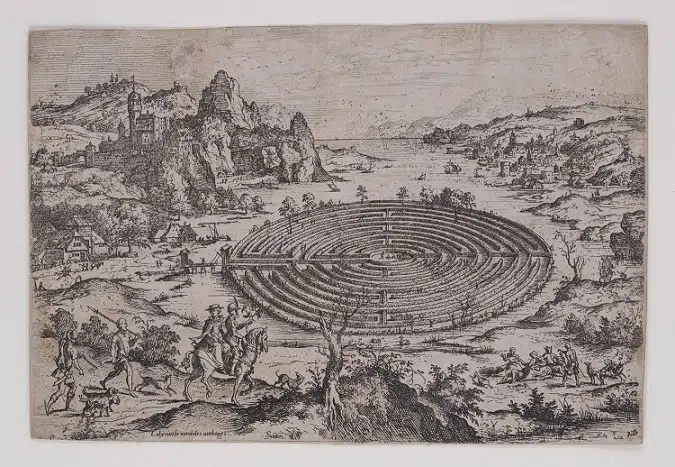
Besides the antiquities that the famous British archaeologist left for the museum, the Ashmolean will also be sharing his excavation archive from Knossos.
This priceless archive could evolve into an element of the long-term partnership that Dr Shapland hopes the Ashmolean, the Archaeological Museum and the Ephorate of Aniquities of Heraklion will establish.
“We are also digitizing it at the moment. We really want to share that excavation archive with Greece and that is something which digital technology allows us to do,” he affirms.

* The exhibition Labyrinth: Knossos, Myth & Reality, runs 10 February–30 July 2023, daily, 10am–5pm, at The John Sainsbury Exhibition Galleries, Floor 3, Ashmolean Museum, Beaumont Street, Oxford. Admission: £7.65–£17.00, available at the Museum or online at ashmolean.org
It is curated by Dr Andrew Shapland, Sir Arthur Evans Curator of Bronze Age and Classical Greece, and held in collaboration with Hellenic Ministry of Culture and Sports, General Directorate of Antiquities and Cultural Heritage, Heraklion Archaeological Museum, Ephorate of Antiquities of Heraklion, National Archaeological Museum, Athens.
Supported by: The Al Thani Collection Foundation and His Highness Sheikh Hamad bin Abdullah Al Thani, The Patrons of the Ashmolean Museum, The Emmett Family, AG Leventis Foundation, Malcolm Hewitt Wiener Foundation, The Luscinus Trust, Michael and Sue Pragnell, The Hellenic Foundation, The John S Fafalios Foundation.
See all the latest news from Greece and the world at Greekreporter.com. Contact our newsroom to report an update or send your story, photos and videos. Follow GR on Google News and subscribe here to our daily email!



